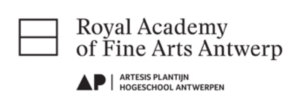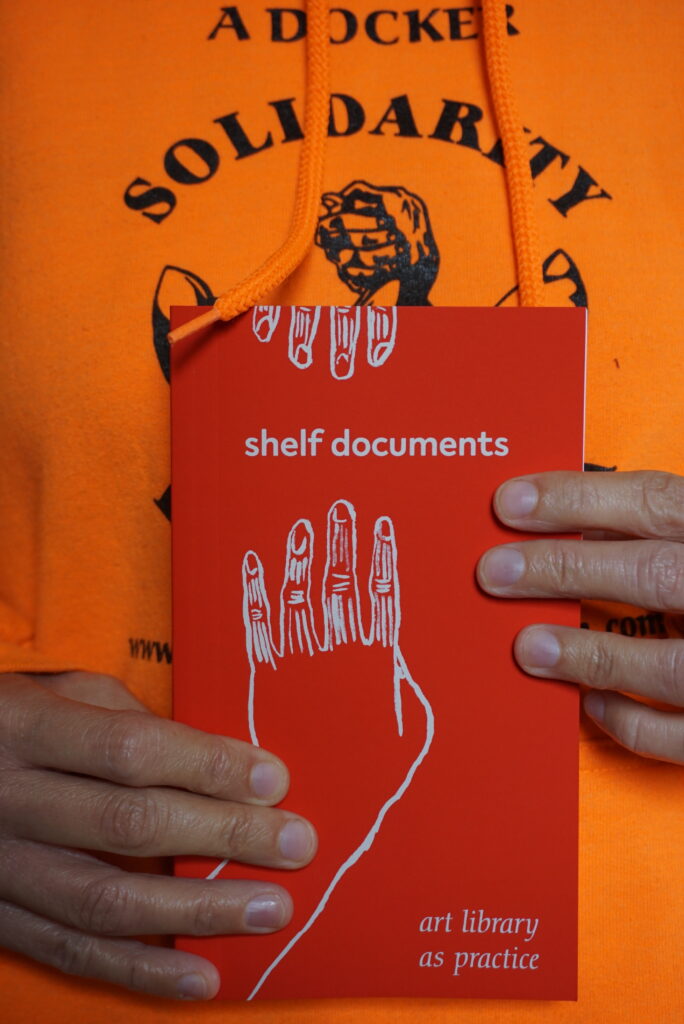research project
In the 1970s Elaine Sturtevant began operating an art practice in which she meticulously copied selected works of her male colleagues. Her practice was a critique of the culture of the art world in which she was working which was dominated by the concept of the lone genius, autonomous, white male creator.
The research project second shelf (2018-19) explores those influence of that culture on the library of the Royal Academy of Fine Arts Antwerp and asks how alternative canons can be generated in the library. The core of the project is the formation of a new collection of books in the library of the Royal Academy that document the work of female, non-white and non-heterosexual artists and related theoretical texts.
Part of this process of raising awareness is thinking about the creative networks that libraries make evident (and sometimes conceal), and about the economy of art and of publishing. This is being explored through institutional relationships and particularly through the second shelf ‘mirror site’ at the Beeler Gallery. Here project collaborator Jo-ey Tang is posing similar questions about the books held by the Packard Library at Columbus College of Art and Design, Ohio, and organising parallel interventions.
second shelf is supported by a research grant from the Royal Academy of Fine Arts, Antwerp.

second shelf alive
Alongside the book collection, the second shelf research project includes a number of interventions in situ and online. These interventions are gestures of care and attention that creatively highlight the presence of the new collection and contextualise its ambitions.
shelf
The books in the second shelf collection have been co-curated by the project advisors. The aim was to complement and extend the existing set of books in the library of the Royal Academy of Fine Arts, Antwerp with particular attention to the deficit of books that explore the artistic work of women, non-white, and non-heterosexual artists and related theoretical texts. The second shelf collection isn’t intended to represent a complete or definitive canon, they are the result of the personal interests, research and experiences of this particular collective. The books were chosen with the intention to inspire discussion and encourage greater advocacy and debate around the library as a shared public good, and as a mode of pedagogy for creative practice.
Each book comes with a brief commentary by a second shelf advisor which summarises its importance and the reasons for inclusion in the collection. We invite you to explore the curated books in the online catalogue and follow the books’ connections and stories. The list, the images and the details about the books will gradually be added to until the project ends in November 2019.
Each book on the list is linked to the existing library catalogue from the Royal Academy of Fine Arts Antwerp. The search tool is a resource that covers Antwerp’s colleges, University of Antwerp, the Middelheim Museum and the Royal Museum of Fine Arts. The collection currently held at the Academy library is designated in the catalogue as Campus Mutsaardstraat (CMU).

website
Website designed by Arthur Haegeman. Ex-libris designed by Sara De Bondt. The design process has included reflection on the how to represent the materiality of the books in an online context, and on issues of gender in design professions. The typeface used in second shelf is Lelo, designed by Katharina Köhler.
book
In January 2021 we concluded the project with the publication of
shelf documents: art library as practice
Body.
Listening.
Book.
Library.
Institution.
How can art libraries be generative resources and sites of action for all who identify as queer, as women, as Black, as Indigenous, as people of colour? What does it mean to consider the art library as a collective practice that spans multiple scales?
In shelf documents artists, writers, curators, teachers, and librarians reflect on their engagements with books, libraries and art-library-as-practice.
Between a reader, an artist’s book, a project documentation and a catalogue, shelf documents might recall a pamphlet, a roadmap, or a recipe book that doesn’t tell you what to do. It is a book that gets mis-shelved.
shelf documents emerges out of the project second shelf (second-shelf.org), a collaborative book acquisition project initiated by artist Heide Hinrichs in 2018 at the Royal Academy of Fine Arts in Antwerp, with a group of advisors: Elizabeth Haines, Marisa C. Sánchez, Jo-ey Tang, Susanne Weiß.
Together they integrated 223 new titles by nonbinary, women and queer artists as well as artists of colour in art libraries as a way to fill gaps, to amplify voices, to seek out the self-initiated and the overlooked. In thinking about diversity in collections, the publication proposes art libraries as sites of intersubjective communion, spanning practices that range from personal bookshelves and the libraries of art schools and universities, to those of spontaneous collectives and the ones associated with major museums.
shelf documents: art library as practice is edited by Heide Hinrichs, Jo-ey Tang and Elizabeth Haines, and designed by Sara De Bondt. It features contributions by Sara De Bondt, Rachel Dedman, Elizabeth Haines, Heide Hinrichs, Laura Larson, Samia Malik, Melanie Noel, Marisa C. Sánchez, David Senior, Jo-ey Tang, Ersi Varveri and Susanne Weiß.
It is published by Track Report, Antwerp and b_books, Berlin and benefits from the support of RAFA Antwerp; KIOSK, Ghent; Beeler Gallery at Columbus College of Art & Design; and WIELS, Brussels.
January 2021
ISBN: 978-3942214384
read a review by Megan N. Liberty on hyperallergic